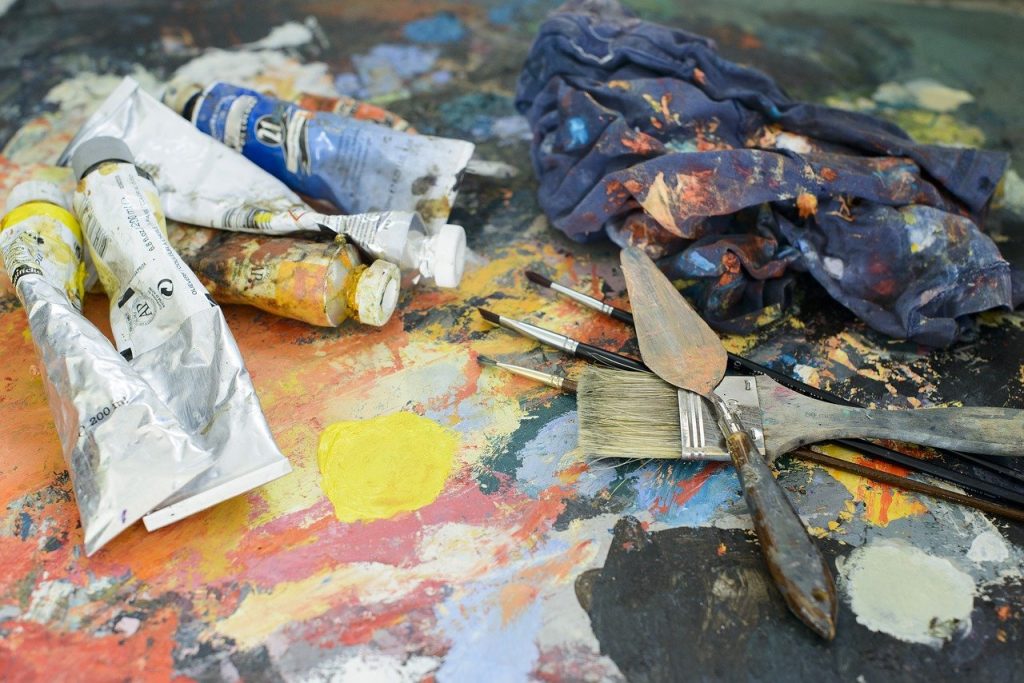When observing a range of successful visual artists, I have come across one thing most of them have in common, irrespective of which medium they work in.
Most of them have traditional art skills.
Since most of my readers are digital artists at least at some degree, this article is for you.
It is, nonetheless my personal opinion and if you have a different experience or knowledge, I would be happy to hear about it.
Why I believe, traditional art is important, even for purely digital artists:
If you are just starting out in your art journey, chances are, you are still a bit overwhelmed and confused as to where to start, what to focus on and how to do pretty much everything. You have a vision of what you want to paint, how the picture should look like, yet your hand and your brain play tricks on you. The portrait you were trying to paint comes out squeezed, the ear is not where it has to be, the line wobbly and thick.
What happens is that apart from a potential lack of knowledge when it comes to painting anatomy, your brain is playing tricks on you. You paint what you think you see, but not what you actually see, or what is.
Additionally, your hand is not used to that kind of precision, and it mostly does what it wants.
Each and every single artist in the world has been at this point.
Painting requires a skill which is acquired over time of focused study and practice.
Hand brain coordination, as it is called, will improve significantly with practice.
In the same way as, when unpracticed, a person might have difficulties drawing a perfect circle freehand, after having drawn hundreds of circles I guarantee you, it won‘t be such a problem anymore.
Well, this hand-eye coordination is hard to acquire on its own, imagine doing it on a smooth glass surface, which makes it even harder to control the movements of your hand. I am speaking of course about digital tablets, iPads, etc.
While I do agree that some tablets come closer to the real life drawing feeling than others (thinking Wacom), there is still a lack of the natural friction paper has to offer.
No tablet in the world will be able to imitate the pressure points a pencil on paper can offer. The small nuances, tilt and movement of the pencil are unique to using a traditional medium, and I truly believe that‘s the best way to getting accustomed to drawing.
As usual, this is my personal opinion. There are many people out there who started completely digitally and either tried traditional art later or just stuck with digital art and are a great and skilled artist.
I just think the journey might be a bit more complicated.
Another issue that comes up is the complexity when it comes to using digital painting software. You are instantly prompted with a variety of tools, colours, canvas sizes, buttons and distinct interfaces. I made the experience that those things can be confusing at first.
When you start with a pencil and a paper block, things are quite straightforward and clear. The whole process is being simplified and allows you to focus on what really matters – the drawing process itself.
The lack of the undo button also implies that you can’t quickly delete your whole work. Why is that important?
In my art school, we were often encouraged to avoid erasing. I believe seeing what you have drawn, noting the mistakes can greatly help you improve. It allows you to learn from your mistakes and apply the learned in your next artwork. While under no circumstances would I want to create my commissions without the undo button, since it’s a real-time saver and an important tool in my workflow, when it comes to studies and practising, avoiding the undo button can help you advance faster.
Another issue with jumping into digital tools right away comes with the body posture we adapt.
Most of us spend many hours sitting in front of a computer, and while that‘s undeniably a lifestyle many live today, there are some things to consider when it comes to painting.
I am not talking so much about whether you sit scrounged or straight-backed, but rather about the movements you can perform while painting digitally versus traditionally.
See, when we paint traditionally we often use the whole arm to make lines. Oftentimes I would put my drawing block on a bigger wooden panel. That way, even when supporting it on my knees I have a wider area of work. I will use my whole forearm and sometimes even the shoulder to make certain lines, and I truly believe learning those techniques can be really beneficial for your linework.
When drawing digitally you are condemned to the size of your screen, thus preventing you from using your whole arm.
Digital tools often imitate traditional medium.
That being said, there is no logical explanation why we would want to begin our journey as an artist with an imitation of the tools available instead of directly working with traditional materials.
From sharpening your pencil with a cutter to holding your pencil in a way that allows for maximum control and visibility of your work, to applying paint in a certain manner – all those things can be transferred to the digital medium, while you can hardly transfer some digital techniques to the traditional.
Traditional art is arguably the basis to start from, while simultaneously getting accustomed to the digital medium.
